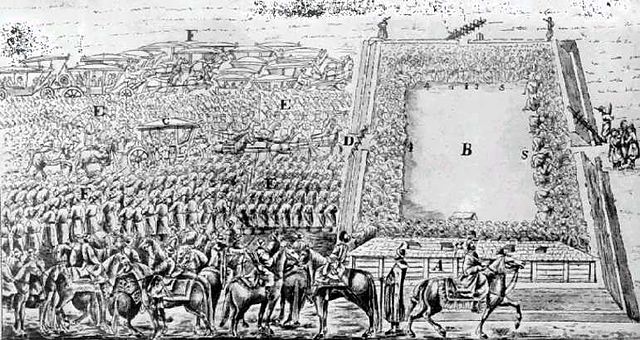1576 Polish–Lithuanian royal election
The free election of 1576 was the second royal election to be held in the Polish–Lithuanian Commonwealth, which took place in 1575/1576. In the night of June 28–29, 1574, King Henry III of France secretly left Poland to claim the French throne. The Commonwealth was left without a monarch, and the period of interregnum ended with a double election. After a few months of negotiations, Anna Jagiellon and Stephen Báthory were elected co-rulers.
Image: Anna Jagiellonka król
Image: Kober Stephen Báthory
Image: Nicolas Neufchâtel 002
Stephen Báthory
Royal elections in Poland
Royal elections in Poland were the elections of individual kings, rather than dynasties, to the Polish throne. Based on traditions dating to the very beginning of the Polish statehood, strengthened during the Piast and Jagiellon dynasties, they reached their final form in the Polish–Lithuanian Commonwealth period between 1572 and 1791. The "free election" was abolished by the Constitution of 3 May 1791, which established a constitutional-parliamentary monarchy.
The first Polish royal election, of Henry III of France in 1573 (1889 Painting by Jan Matejko).
Election of Michał Korybut Wiśniowiecki (Michael I) as King of Poland at Wola, outside Warsaw (1669).
Election of August II the Strong at Wola, outside Warsaw (1697). Painting by Jean-Pierre Norblin de La Gourdaine.







